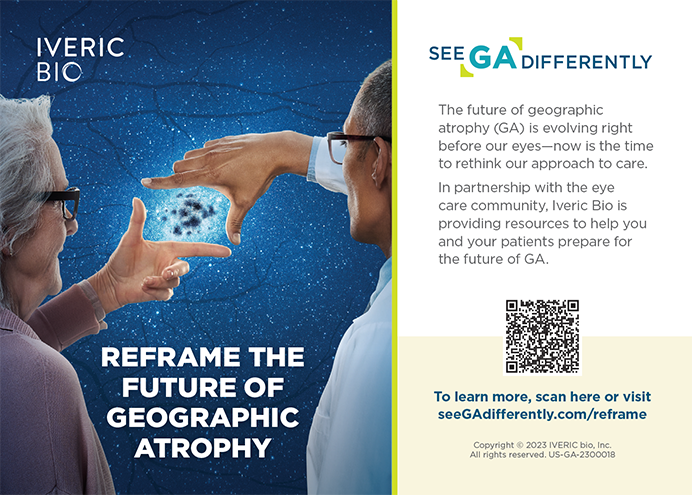At our referral cornea practice, we often see patients with red eyes who we suspect may have acute conjunctivitis. The most common types—bacterial, viral, and allergic—present similarly, and their signs and symptoms are often indistinguishable. Accurate diagnosis of adenoviral conjunctivitis is important, however, because it is highly contagious and will quickly spread through the local community. The infection rate after close contact with a patient who has adenoviral conjunctivitis is as high as 50%. Moreover, the virus can live on inanimate surfaces for up to 28 days, and infected patients are contagious for up to 3 weeks.1-3 Our practice has taken measures to establish a dedicated protocol for diagnosing and managing conjunctivitis that is centered on preventing the spread of the infection by protecting those who come into contact with an infected patient, and we use an evidence-based diagnosis to guide an informed treatment decision.
THE ENTIRE STAFF PLAYS A ROLE
Every member of our staff plays an integral role in managing conjunctivitis. When patients present with a red eye, a member of the front desk staff checks them in. The front desk staff alerts the technician, who takes the patient from the waiting room to an isolated examination room. The goal is to minimize contact between a potentially infectious patient and other patients and staff members in the office. This is the same protocol that a pediatrician’s office implements by having separate waiting rooms for sick and well children.
When the technician examines the patient, the former is careful not to shake hands with the latter or to interact in a way that may encourage the infection to spread. If the technician suspects contagious disease, he or she consults the clinician and requests permission to proceed with diagnostic testing (AdenoPlus; Nicox) before instilling drops or using any instruments that may touch the patient’s eye. If the clinician is likewise suspicious, he or she gives the technician permission to perform the point-of-care diagnostic test to rule out or confirm the presence of adenoviral conjunctivitis. The results are available in 10 minutes. The clinician is informed of the results and conducts a full examination of the front surface of the patient’s eye to rule out any other contributing factors to the patient’s symptoms.
TREATMENTS
If the test is positive for adenoviral conjunctivitis, we instruct the patient on ways to prevent contagion and suggest symptomatic treatment such as artificial tears and cool compresses to make him or her more comfortable. For a severe case, we may prescribe a mild steroid. Preliminary clinical data have shown that ganciclovir (Zirgan; Bausch + Lomb) may be helpful.4 Evidence suggests that a diluted form of Betadine (Purdue Frederick) may also work.5 If the diagnostic test is negative for adenoviral conjunctivitis, then the clinician proceeds with a differential diagnosis for bacterial or allergic conjunctivitis.
A patient’s history and medical findings help determine the presence of bacterial or allergic conjunctivitis. We typically prescribe a topical antibiotic, most commonly a flouroquinolone, to treat bacterial conjunctivitis. If the patient shows signs of lid involvement or cellulitis, we may also prescribe oral antibiotics. If the diagnosis is allergic conjunctivitis, we initiate treatment dependent on severity using the multiple medications to treat allergies such as antihistamine- decongestant combinations, mast cell stabilizers, and anti-allergy compresses. It should be noted, however, that treatment could be as simple as decreasing exposure to the allergen. We also recommend artificial tears and cool compresses to decrease itching and swelling for symptomatic relief.
PRACTICE DIFFERENTIATION
One of the most positive elements of establishing these measures and implementing a point-of-care diagnostic test is that patients perceive these steps as an indication that our practice is at the forefront of technology. From a clinical perspective, we are able to provide patients with definitive information in the form of an evidenced-based diagnosis. If we confirm a diagnosis of viral conjunctivitis, we can help the patient prevent contagion and proceed with a treatment regimen. If we rule out adenoviral conjunctivitis, patients can move on with their lives without missing school or work. Managing conjunctivitis well improves patients’ quality of life.
CASE REPORT
Our lead technician had just returned from a 7-day cruise in the Caribbean. When she came into work, both of her eyes were extremely red. Based on her symptoms and presentation, we performed the AdenoPlus test on her and were relieved to find it negative for adenovirus. We then knew that our patients were not at risk of infection and could initiate a proper treatment plan for our staff member.
Rajesh K. Rajpal, MD, is the medical director of Cornea Consultants in McLean, Virginia, and a clinical associate professor at Georgetown University Medical Center in Washington, DC. He is a consultant to Nicox. Dr. Rajpal may be reached at (703) 287-4122; rrajpal@seeclearly.com.
Angela Russel, Sachin D. Rajpal, and Dawn Williams, OD, are part of the See Clearly Vision Group, with locations in Arlington and McLean, Virginia; Washington, DC; and Rockville, Maryland. They acknowledged no financial interest in the prod- ucts or companies mentioned herein.
- Kaufman HE. Adenovirus advances: new diagnostic and therapeutic options. Curr Opin Ophthalmol. 2011;22:290-293.
- Gordon YJ, Gordon RY, Romanowski E, et al. Prolonged recovery of desiccated adenoviral serotypes 5, 8, and 19 from plastic and metal surfaces in vitro. Ophthalmology. 1993;100(12):1835-1840.
- American Academy of Ophthalmology Cornea/External Disease Panel. Preferred Practice Pattern Guidelines. Conjunctivitis–Limited Revision. San Francisco, CA: American Academy of Ophthalmology; 2011. www.aao.org/ppp.
- Pepose JS, Price FW Jr., Goldberg D, et al. A placebo controlled comparison of topical Zirgan versus Genteal gel for the treatment of adenovirus conjunctivitis. http://www.clinicaltrials.gov/ct2/show/ NCT01533480. Accessed August 9, 2012.
- The Betadine for EKC Study. http://www.betadineforekc.com/the-study.aspx. Accessed May 16, 2014.


